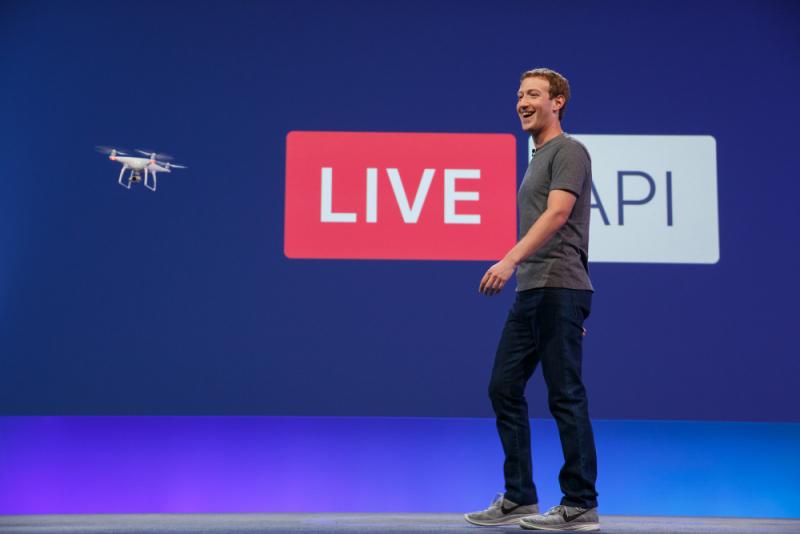Facebook’s Live API: It’s Time To Evaluate Your Livestreaming Strategy
Live video gets 3 times the amount of engagement as non-live video and that’s one of the reasons why Facebook is releasing its Live API to developers. Here’s what you need to know.
Until now, a limited set of Facebook users have been able to go live from their smartphones; broadcasting real time video to followers and fans. They could respond to submitted text comments in real time. With the API release we’ll start to see higher quality live video hit newsfeeds because broadcasters will be able to plug their professional platforms into the system. It’s not just broadcasters though who will benefit from the API. An auto maker could give a live tour of a factory and field questions in real time. Or concert venues could give a behind the scenes look ahead of a performance.

Facebook CEO Mark Zuckerberg at the company’s F8 conference. (Credit: Facebook)
At the F8 developer conference Facebook CEO Mark Zuckerberg introduced the live platform with a DJI drone that was livestreaming video directly to Facebook. The previous smartphone-only livestreaming setup didn’t allow this.
With this rollout, Application Development & Delivery Professionals need to consider:
- The future of your current platform. Perhaps you already use UStream or Livestream for your events. It’s time to reconsider that. Facebook has 1 billion daily active users or about one-seventh of the world’s population. Video is a priority for Facebook with Mark Zuckerberg calling it the “new golden age of video.” Live video is no longer event-specific. It should be planned spontaneity. Facebook gives you the audience and now the technology to support it.
- Which partners are worth engaging. There are a number of companies and platforms that partnered with Facebook for the rollout. They include online video platform vendor Ooyala, drone maker DJI, 4K camera company Mevo and others.
- New workflows and technology. Live video on social is different from traditional broadcast video. You’ll need to support a workflow that encourages two-way interaction with viewers. How will you display comments to your host? Depending on the size of the audience you might want to moderate comments. You’ll also want to use on screen graphics to prompt questions and drive engagement. On the hardware side there are products like the Mevo camera that produces 720p video from a 4K feed, which can give the appearance of multiple cameras when there’s only one. See the video at the end of this post for more on that.
- Best practices for live video. In order for live video to be a success there are a few key things you’ll need to do. 1. Promote your livestream before it happens. 2. Craft a description that will make your viewers want to tune in. 3. Ask your viewers to follow you so that they get a notification when you go live.
What are your plans for live video? If you’re currently doing it, what platform are you using and with Facebook’s announcement has it become more attractive to you? Let me know in the comments below or on Twitter.
